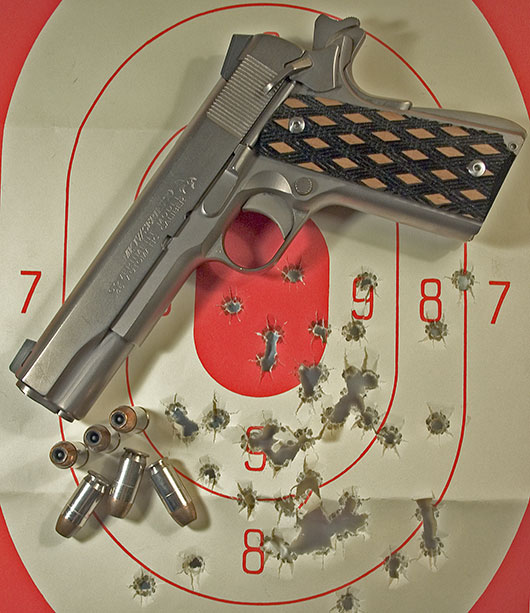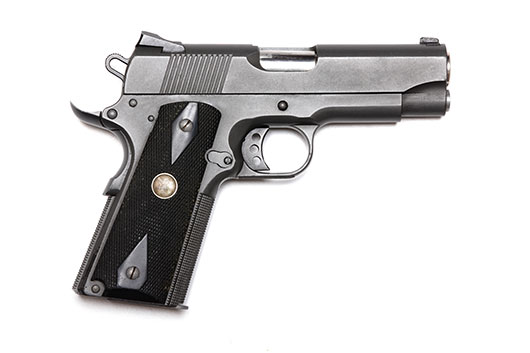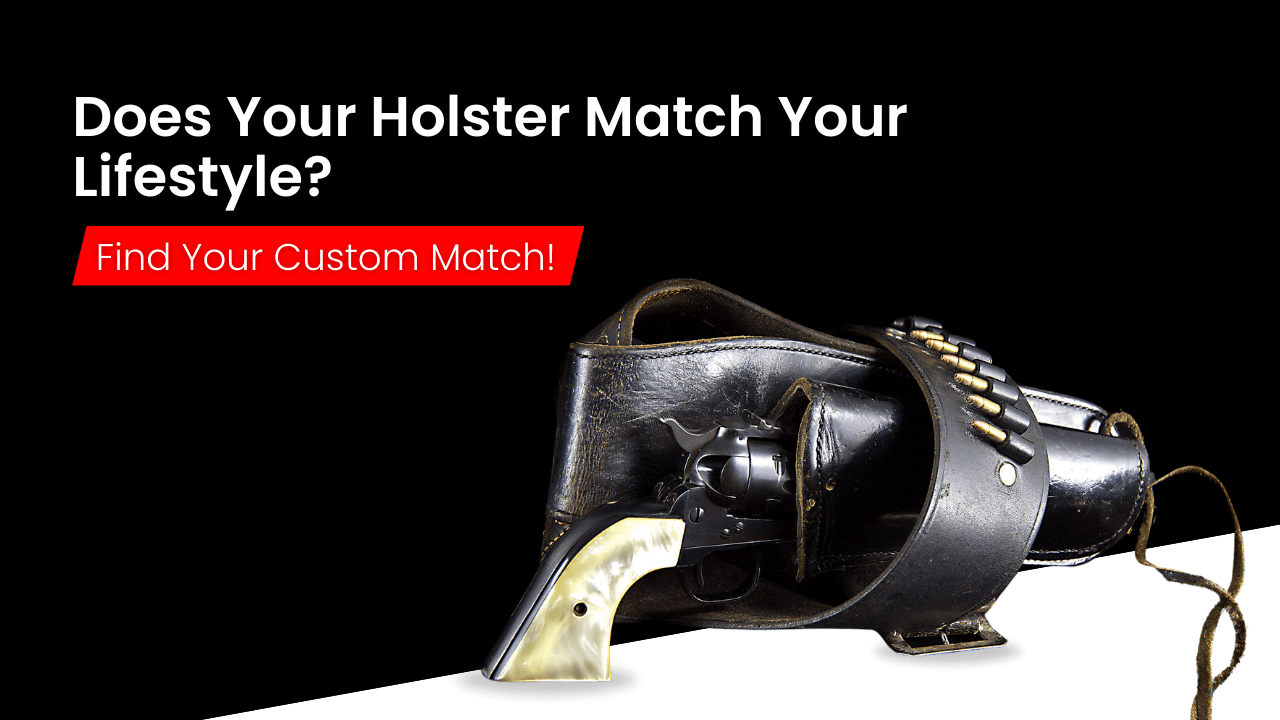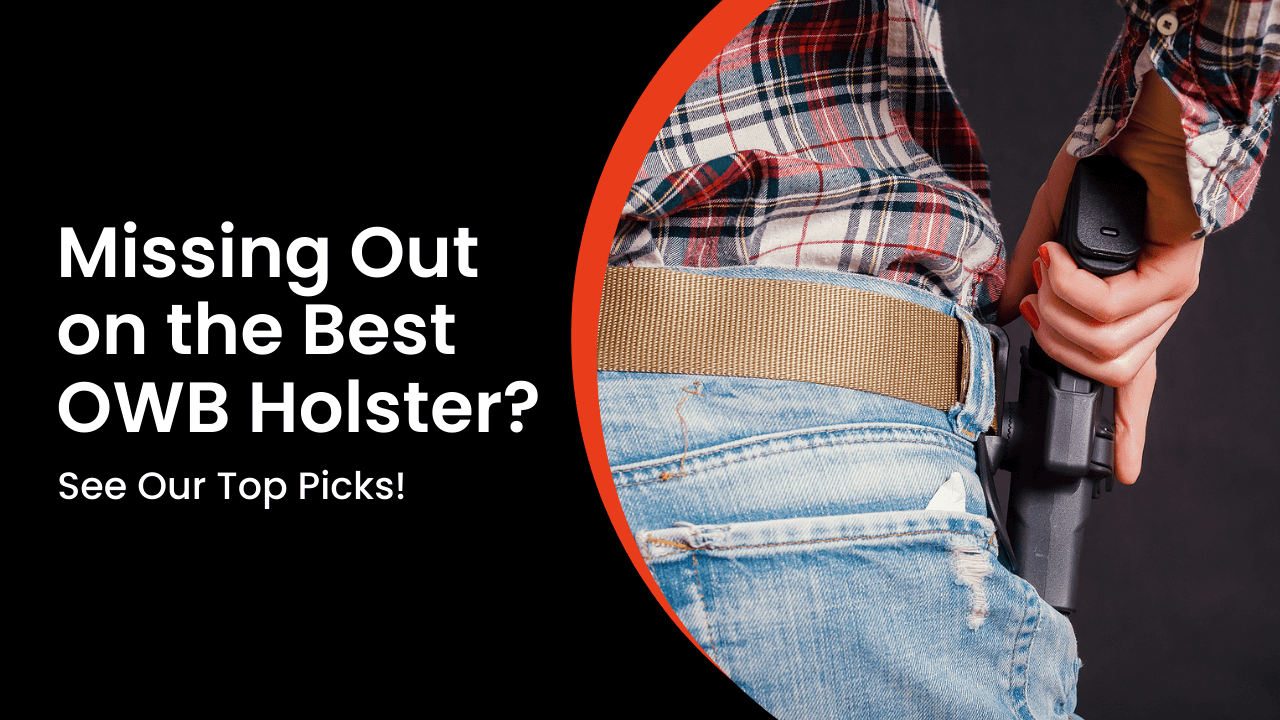What Colt 1911 Holster Do You Recommend or Don’t?
Sep 3rd 2021

The 1911 is a classic American handgun design, having been in use by military personnel, law-enforcement officers, and private citizens for 110 years. Designed by John Moses Browning and developed in cooperation with Colt’s technical staff, the U.S. Army adopted the Colt Browning Automatic Pistol on March 29, 1911, as the “U.S. Pistol, Automatic, Caliber .45, M1911.”
Although the 1911 pattern is considered old-fashioned by some due to the widespread adoption of high-capacity 9mm and .40-caliber semi-automatic pistols, it remains a viable weapon for self-defense and concealed carry. Today, dozens of companies manufacture handguns conforming to the Colt Browning pattern.
M1911 and M1911A1
The Model 1911/1911A1 is a hammer-fired, single-action-only (SAO), semi-automatic handgun. It operates on the short-recoil principle. When in battery, the barrel and slide are locked together.
On firing, the breech pressure drives the slide rearward. After recoiling a short distance, a swinging link causes the barrel to pivot downward, unlocking its lugs from corresponding recesses in the slide.
The barrel then stops, and the slide continues its rearward stroke. The extractor, which snaps over the cartridge case rim on chambering, withdraws the spent cartridge. The cartridge case head strikes the ejector on the opposite side, expelling it from the weapon.
The recoil spring, located below and parallel to the barrel, compresses and expands, driving the slide forward. It strips a fresh cartridge from the magazine and feeds it into the firing chamber.
The 1911 for Concealed Carry

The primary variants of the 1911 pattern include:
Government Model
The Government Model is the full-size M1911/M1911A1 handgun with a 5” barrel. The overall length is 8.25”, although this may differ depending on the grip safety, and the height is 5.5”. The height, however, is the distance from the top of the rear sight to the bottom of the frame; therefore, the rear sight will affect this variable.
Commander
The original Colt Commander was introduced in 1949, chambered in 9mm. It substitutes a 4.25” barrel and an aluminum-alloy frame to reduce weight and bulk.
Many companies manufacture Commander-pattern 1911 pistols today with barrels varying in length from 4–4½”. The Combat Commander retains the relatively short barrel but uses a steel frame in place of aluminum and fires the .45 ACP cartridge. In many ways, this is the perfect balance for concealed carry.
Officer’s ACP
The Officer’s ACP is a more compact variant of the Commander, substituting a 3.5” barrel. However, while the Commander uses the same frame as the Government Model, the Officer’s ACP uses a shorter frame, reducing the height to 5⅛”.
The front strap is shorter, reducing the available gripping surface. Combined with the reduced weight, the Officer’s ACP will produce more recoil.
Reasons to Carry a 1911
There are several reasons that a gun owner may select a 1911-pattern handgun for concealed carry. These include:
Ergonomics
The standard 1911 pistol design is prized for its ergonomics. As the single-stack magazine holds cartridges in a single vertical column, the width of the frame is less than many high-capacity semi-automatic pistols that use a double-stack magazine with a staggered feeding column. In addition, the frame angle provides what many gun owners regard as a comfortable grip.
Short and Light Trigger
A single-action trigger only performs one action — i.e., releasing the hammer — requiring less force to press. In addition, the trigger press tends to be both shorter and more crisp than double-action triggers.
Steel or Aluminum Frame
Steel-framed 1911 pistols are heavier than polymer-framed competitors, all else being equal. For example, an empty Model 1911A1 is heavier than a loaded Glock 21. However, in a compact .45-caliber handgun, the additional weight can be an advantage, reducing the recoil.
How to Choose the Right Holster
There are several essential criteria to consider when choosing the right holster for your Colt 1911.
Carry Method
The ideal holster for your 1911 depends on how you want to carry it. In the context of waistband carry, there are two primary methods of carrying a concealed handgun: IWB and OWB.
With IWB (inside-the-waistband) carry, you wear the holster between your body and the inside of your waistband, attached to your belt via clips. This method is ideal for concealed carry, allowing you to take advantage of the 1911’s comparatively narrow frame.
OWB holsters are worn on the outside of the belt and require a covering garment to improve concealment. However, these holsters are often considered more comfortable to wear but are better suited for open carry.
IWB Recommendation
The Incognito T3 series is a discreet, durable, and low-profile IWB holster available for the full-size Government Model (5”), with or without accessory rail, and compact Commander (4”) variants of the 1911 platform. Although the holster ships with a 1½” or 1¾” polymer belt clip, you can upgrade this to a Discreet Carry Concepts clip instead.
Alternatively, you can carry OWB (outside the waistband). This is your standard belt holster, attaching via loops. OWB is suitable for either concealed or open carry, but concealed OWB carry requires the use of a covering garment, such as a jacket or coat.
OWB Recommendation
If you prefer to carry your handgun openly or want the added comfort of carrying OWB, the Incognito Concealment Venture is a superb option. Designed to contour to your hip or abdomen, the Venture keeps printing to a minimum without sacrificing the user’s comfort. Depending on which you find the most convenient, the Venture can attach to your belt using either loops or clips.
Active and Passive Retention
One of the most important considerations when selecting a suitable holster for concealed carry is retention. Retention refers to the ability of the holster to firmly hold and retain the weapon, preventing it from moving, becoming loose, or falling out. The ability of your holster to retain your firearm is necessary for both safety and security.
Retention can be divided, broadly, into two categories: active and passive. In active-retention holsters, when you want to draw your 1911 pistol, you’ll need to unsnap a thumb break, depress a button or lever, or rotate a protective hood. This unlocks the weapon from the holster, allowing you to complete the draw stroke.
Active retention is critical for open carry, where your weapon is fully exposed. You’ll commonly see law-enforcement officers wear active-retention holsters for this purpose — it renders disarmament more difficult for an assailant.
In a passive-retention holster, there is no locking mechanism or separate controls to activate. Instead, the holster uses close tolerances and friction to achieve a snug fit. When you want to draw your weapon, you’ll pull upward forcefully to free the gun from the holster.
Passive-retention holsters usually allow you to adjust the retention using one or more screws, which cause the two Kydex or leather sheets to hold the gun more tightly or more loosely.
While passive retention is simpler and allows for a potentially faster draw, it’s also less secure. As a result, passive retention is arguably more suitable for concealed carry, where the weapon is hidden under clothing. If a potential criminal assailant doesn’t know that you’re armed, he can’t attempt to disarm you.
Materials — Leather and Kydex
When searching for a suitable gun holster for your 1911, there are two materials that you should consider: leather and Kydex. While leather is the quintessential holster material, Kydex has several notable advantages. Many 1911-pattern handguns have a zinc or manganese phosphate (parkerized) finish. While this finish provides a degree of protection against rust, it’s not as effective as many modern surface treatments.
As Kydex doesn’t absorb or retain water, it can more effectively preserve the finish of the steel frame and slide against rust. However, it’s worth noting that Kydex is more abrasive against metal finishes than leather.
Where Kydex shines is its long-term durability and resistance to the elements. If you plan to carry your handgun outdoors, in the rain, snow, sleet, mud, etc., Kydex will not degrade. Furthermore, Kydex retains its shape more effectively than leather and will not deform.
Trigger Guard Protection
Every holster, regardless of the weapon, should have a fully covered trigger guard at a minimum. This prevents you from inserting your index finger into the trigger guard until you have completed the draw stroke and your weapon is free from the holster. A covered trigger guard also prevents foreign objects from entering the trigger guard and potentially causing an unintentional discharge.
Full Firing Grip
To perform an efficient draw stroke and maintain control of the weapon, the ideal holster should allow you to acquire a full firing grip. When you acquire a full firing grip, you place your dominant or strong hand firmly on the pistol’s frame.
Your middle, ring, and little fingers should encircle the front strap, and the top of your middle finger should rest against the bottom of the trigger guard or frame undercut. The webbing between your thumb and index finger should be as high on the frame as possible to reduce leverage when firing.
Sweat Shield
In a pancake holster, there are two sheets of Kydex or leather enveloping the handgun. A holster has a sweat shield or sweat guard when the rear holster sheet extends upward, partially or fully covering the slide.
This acts as a barrier between the handgun’s slide and your body, protecting the weapon against the corrosive effects of perspiration. While a sweat guard is a useful feature for any concealed-carry holster, especially during the summer months, it shouldn’t interfere with your ability to grip or draw the weapon.
Magazine Pouches
Magazine pouches or carriers allow you to carry one or two additional magazines for your self-defense handgun, increasing the firepower available to you. As most 1911-pattern handguns are fed from single-stack magazines holding between six and nine rounds, you may consider carrying extra mags for emergencies.
There are IWB and OWB magazine pouches that you can buy to complement your holster and carry method.
Find the Holster That’s Right for You
At Incognito Concealment, we offer Kydex holsters designed for a wide variety of handguns, including the venerable 1911 platform. In a world of striker-fired, polymer-framed handguns, the 1911 stands out as an old-school classic. If you want help finding the best holster for your 1911 pistol, give us a call at (586) 333-4240.











